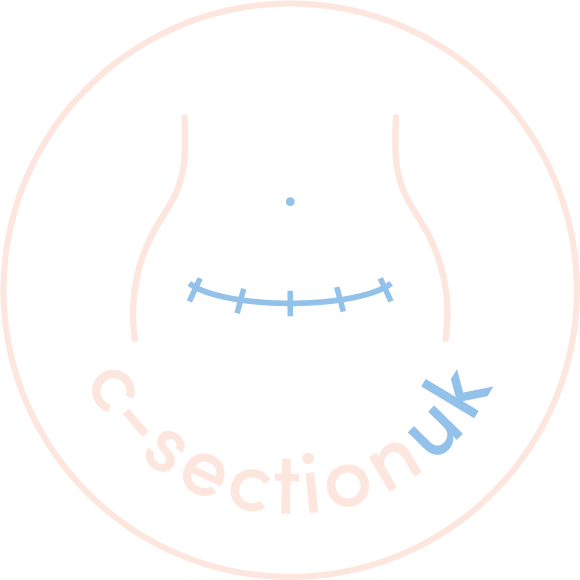10 Things Nobody Tells You About Having a C-Section
Hey there! If you're getting ready for a C-Section birth, it's normal to have some questions or concerns. To help you, we’ve compiled a list of 10 things you might not have heard about having C-Section. Let's take a look!
1. The term "natural" birth may be offensive
Be mindful that using the term "natural" birth about a vaginal birth could make some individuals feel uneasy or uncomfortable. This is because it may come across as judgemental towards those who have had a C-Section, and they may interpret your view of their birth as being “unnatural” or “less than”, which is absolutely not the case.
It is essential to acknowledge that every birth experience is unique and valid, regardless of how the baby was delivered.
2. You can’t drive immediately after a C-Section
Driving can put a lot of physical strain on your body and may impact your recovery. So, it's best to follow your healthcare provider's advice and wait a few weeks before getting behind the wheel again. Make sure to check your car insurance policy too.
Take care of yourself and your little one!
3. A C-Section isn't the "worst" way to give birth
When it comes to giving birth, everyone's experience is different and there is no right or wrong birth, or best or worst birth. Sometimes, C-Sections are necessary to ensure the safety of both the mother and baby. Some individuals may prefer to have a C-Section birth due to emotional or psychological reasons.
It's important to remember that there is no right or wrong way to give birth. C-Sections are a perfectly valid and essential option for parents to deliver their baby.
Let's respect each other's choices without judging and strive to support and encourage all parents as they bring new life into the world.
4. You may get the shakes
It is expected to experience shaking or shivering during or after a C-Section. This reaction can be attributed to anaesthesia, changes in body temperature, or the body's response to surgery.
5. You’ll have a scar that may last a long time
Although C-Section scars generally tend to fade away over time, they serve as a lasting reminder of the birthing experience. Accepting your scar as a part of your journey to motherhood can be an empowering experience. It may take some time to look at, touch or engage with your scar which is completely normal.
6. Movement may be painful (Coughing and Sneezing Will Hurt)
You might find that coughing, sneezing, or even laughing can be a bit sore due to the strain on your abdominal muscles. Here's a tip to help you feel better: just place a pillow over your incision and take things slow.
That should help alleviate any discomfort you're feeling.
7. You’ll Probably Feel Cold
You might feel a bit chilly or get the shivers. But don't worry; it’s just a side effect of the anaesthesia used during the procedure.
Ask your Midwife, partner or birth partner to grab some blankets and warm clothing to help you stay cosy and comfortable.
8. You Might Feel Tugging
When you have a C-Section, you might feel some pressure, pulling, or tugging sensations as your little one is brought into the world. Don't worry; these sensations are entirely normal and expected during the surgical process.
The spinal anaesthetic blocks the pain receptors in your body, but that doesn’t take away the feeling of pressure.
9. Pooping can be a problem
Constipation after a C-Section birth is common for a few reasons, but there's no need to worry because you can do a few things to help manage this issue.
Make sure to drink lots of water, eat foods high in fibre, have a gentle walk around to get things moving and, most importantly, talk to your healthcare provider if you have any concerns.
They can help you figure out the best way to deal with this.
10. Post-Op Leg ‘Massage’ and Vulval Wash
After a C-Section, the Midwife will provide post-operative care, which includes leg massages to prevent blood clots. Unfortunately, these massages are not like those you would get at a spa.
Instead, the Midwife will use foot or leg pumps called ‘flotrons’, cuffs that intermittently inflate and deflate. This helps to circulate the blood effectively until you can become mobile again.
To help you freshen up and monitor the amount of blood loss youre experiencing- the Midwife may offer to perform a vaginal wash for you or encourage you to do it yourself. This involves some warm water and disposable cloths to clean up any old blood from your upper thighs, groin and vulva.
You’ll be much more comfortable with a wash and some clean pads, allowing you to focus on snuggling in with your newborn.
These procedures are all part of the post-operative recovery process aimed at ensuring your well-being. Navigating the experience of having a C-Section can be challenging, but you're doing great already!
Being aware of these aspects can help you prepare and cope with the potential effects of the procedure. Remember, every journey is unique, and it's essential to prioritise your physical and emotional well-being during the recovery process. You got this!
Written By: Midwife Laura
